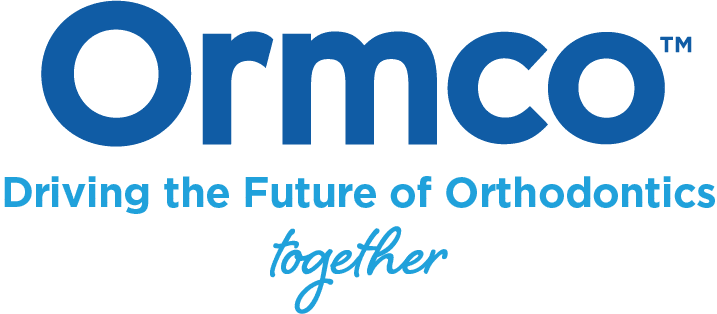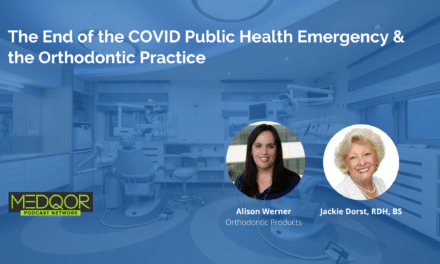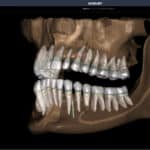Running a high-efficiency orthodontic practice requires careful alignment between clinical tools, workflow design, and leadership strategy. In this episode of the Orthodontic Products Podcast, sponsored by Ormco, host Alison Werner talks with Nadia Nizam, DDS, MCID, FRCD (C), an orthodontist and private practice owner in Calgary, Alberta. The conversation explores how Nizam built and scaled her woman-owned practice, her decision to switch aligner systems, and the role Ormco technologies play in maintaining efficiency in a changing orthodontic landscape.
Starting a Practice from Scratch
Nizam launched her practice over 13 years ago while 8 months pregnant and new to Calgary. With no local network or referral base, she relied on aligners to establish a niche and grow her patient volume. Her early decision to differentiate her practice around clear aligners laid the foundation for a scalable, patient-focused model.
The Switch to Spark Aligners
After 12 years with another aligner provider, changes in that company’s policies prompted Nizam to reevaluate. She ultimately transitioned to Ormco’s Spark Aligners, initially out of necessity—but soon saw improved treatment timelines and patient satisfaction. This experience reinforced the importance of choosing tools that align with both clinical and practice management goals.
Balancing Aligners and Brackets
As patient preferences evolved, Nizam shifted to offering both aligners and brackets. With a growing share of bracket cases, she adopted Ormco’s digital bonding (ODB) technology to streamline workflow and reduce chair time. The result was a more flexible practice model that still supported her goal of working only 3 clinical days per week.
Staffing and Efficiency in a Changing Market
Nizam emphasized the importance of lean staffing and cross-training in today’s economic climate. She described how Ormco’s support—including hands-on help from her rep—has contributed to keeping her practice efficient without the need for a large team. Her approach reflects a broader shift toward adaptable, systems-driven practice models. OP
Key Takeaways:
- Transitioning to Spark Aligners resulted in faster treatment times and more consistent outcomes.
- Digital bonding helped scale bracket cases without compromising workflow efficiency.
- Cross-training staff is critical to maintaining productivity with a leaner team.
Podcast Transcript
Alison Werner (00:06)
Hello, and welcome to the Orthodontic Products podcast. I’m your host, Alison Werner. On today’s episode sponsored by Ormco, we’re going to talk about how Ormco has evolved with the ever evolving orthodontic industry. And joining me to do that is
Nadia Nizam, an accomplished orthodontist and practice owner who leads a thriving multimillion dollar practice in Calgary, Alberta, while staying at the forefront of innovation in the orthodontic industry. We’ll talk about Spark Aligners, Ormco’s digital bonding tech, and what it means to be a woman in leadership in the field.
If you’re in private practice and thinking about where the industry is headed, this episode is for you. Dr. Nizam, thanks for joining me.
Nadia Nizam (00:39)
Thank you for that generous introduction.
Alison Werner (00:42)
You’re welcome. so talk to me about your practice and how you came to orthodontics.
Nadia Nizam (00:48)
So I started my practice exactly 13 and a half years ago. That’s a week before my son was born. So I built this practice from scratch. And it was, I was eight months pregnant, started the practice from scratch. And again, I was new to Calgary. So starting a practice where I didn’t know anyone, no referral base, nothing, was definitely a difficult thing to do. However, I knew in my heart that I wanted to establish something that was my own. I didn’t want to carry on someone else’s legacy.
Alison Werner (00:55)
Mm.
Nadia Nizam (01:18)
I wanted to create my own legacy. although the decision was a tough one and also a risky one, I think I did it in a good time though. think nowadays that is changing. think a lot of people have to look at a whole rack of things before they say, okay, I’m gonna start my own office. So things have changed. So was definitely lucky in that perspective. I was also lucky that I started the office. Again, as I mentioned, I was pregnant. as a woman, you have to consider those things as well. We’re gonna cover that later.
Alison Werner (01:18)
Mm-hmm.
Yeah.
Nadia Nizam (01:48)
But when I started my practice, it was very slow. So I was able to raise two kids in that two-year period when the practice grew. And when it grew, I just knew that I was setting my practice up in a location that there were four orthodontists, five kilometers away from me. And I was the first female establishing in that environment. So I need to create a niche for myself. And that’s where my story of clear aligners comes in and how I switched
Alison Werner (01:54)
Okay.
Nadia Nizam (02:18)
to Spark aligners, but I created a niche for myself to be different, to offer to my patients something that no one else was offering. And that really was my ticket to success. And in the last 10 years or so, I am a single owner. I work three days a week. I don’t want to work more than that. And I’ve got two kids, as I mentioned. So I wanted to have an office that was highly efficient because that’s important to me. I don’t want to work more than three days.
Alison Werner (02:29)
Mm.
Yeah.
Nadia Nizam (02:48)
I also wanted to have a practice that I’m doing 500, 600 starts a year. So that was my goal and that’s what I accomplished a couple years ago with the help of clear aligners and brackets at the same time. But that is sort of where my practice is now.
Alison Werner (02:53)
Okay.
Yeah.
Okay, so since this conversation is going to talk about kind of Ormco and how they’re working with you, how long have you been using Ormco products and what was your introduction to the company’s product portfolio?
Nadia Nizam (03:15)
Sure. So, Ormco and I go way back. When I was in residency, we used the Damon bracket system. I, so there’s, in residency you have, you know, six, eight clinics and every instructor will give you different bracket system. We are super, super lucky. Three of our clinics were actually Damon bracket systems. So we use the Damon brackets a lot. So when I graduated, there was not even a single thought in my mind that I would use any other bracket system. Although for a new grad going to an Ormco bracket system,
which is considered a more expensive bracket system, was a difficult, usually is a difficult thing for people to figure out or to say, okay, this is what I’m gonna use. But for me, there was not even a thought process. So my relationship with Ormco started as soon as I graduated or even when I was in residency. So I started using the Damon bracket system and I’ve not deviated for that for the last 15 years has always been Ormco. And I feel like, you know, for the longest time Ormco always had
Alison Werner (03:53)
Yeah.
Nadia Nizam (04:15)
a very deep connection with me because my Ormco rep is the one who came in when I opened the office to set up my brackets for me. And I feel like that is the whole feel of Ormco. It’s a very family oriented company. It’s not just about brackets or aligners. It is how do we make you successful? that whole, just the fact that my rep came in and set up my bracket system as I was eight months pregnant shows you that
Alison Werner (04:23)
Mm.
Nadia Nizam (04:45)
a company that really cares about you, you know? It’s carried on since then.
Alison Werner (04:47)
Yeah. Yeah. Well, that might go to my next question for you. know, Ormco has always kind of marketed itself as an orthodontist first company. So from your perspective in private practice, excuse me, how have they kind of continued to meet that real world need of clinicians like you over the years?
Nadia Nizam (05:09)
So,
I think Ormco is always a cut above every other company because when they came up with the Damon bracket system because of Dr. Dwight Damon, it really was a revolutionary system. Dr. Frost talks about this all the time, that no one really thought that this was going to work or this is a good product. When we look at it now, we have revolutionized the industry where we’re doing non-extraction cases, but this started with Dr. Damon a long time ago.
Alison Werner (05:29)
Yeah.
Nadia Nizam (05:41)
That was a huge revolution for them. And then came Spark aligners, where they came up with the product, they didn’t just copy some other product, they said, no, let’s come up with a different material that is clear and more comfortable for the patient. And they really went in with the concept that how can we make the patients happy and also the orthodontist happy. And I feel that is the reason why I switched from a different aligner brand to Spark a couple of years ago is because
put me on the pedestal because really at the end of the day, know, I hate to say this to companies, but your orthodontist is what’s selling the product. Your product doesn’t sell itself, right? So, and that’s the reason why I feel more taken care of by Ormco and I’ve always been just because I use their product, but they support me from all different directions.
Alison Werner (06:12)
Mm-hmm.
Yeah, yeah.
Yeah.
Yeah.
Well, you started to talk there about your experience with Spark aligners. So talk to me a little bit more about your experience with integrating it into your practice and how did that impact your kind of your treatment planning and your results?
Nadia Nizam (06:47)
So Alison, I have to give you a little bit of, you know, just a background. So I was with a different aligner brand for the time I graduated. And for 12 years, I was a very loyal customer with the other aligner brand. I was the top 1 % provider of that brand. And what happened was that there were changes happening in that brand and I asked them, hey, listen, can you not make those changes happen for me? I’ve been loyal to you.
Alison Werner (06:54)
Yeah.
Nadia Nizam (07:17)
that you know what, no, if you do not use our product, you’re gonna lose. And I thought to myself, wait a second, you don’t sell the product, I sell the product to the customers. So I felt right there that they didn’t make me important. Not important, I don’t wanna be important, but they just took away my credibility. And so that was my transition to Spark aligners. So my transition was not really based on is it a better brand?
Is it a better?
know, a aligner material, is it going to give me better results? It was not that. It was out of, you know, I hate to say the word like desperation, to be very honest with you. But I made a hundred percent switch from a different aligner brand to Spark. Now, after I made the switch, within three months, I realized, wow, my cases are turning out to be faster. The results are better. My patients are happier. What’s going on? And that’s when I realized it is actually Spark, right?
Alison Werner (07:56)
Okay.
Mm-hmm.
Nadia Nizam (08:18)
That’s where I realized I’m doing the same thing I was doing before, 10 years ago. But the spark is what’s changing the game here. So that’s sort of my transition. And over the last two and a half years, it’s been a game changer for me. It is not just the material itself. It works like the way you want brackets to work. And that’s huge. For someone who’s used aligners for a long time, I never felt
Alison Werner (08:21)
Okay.
Mm-hmm.
Yeah.
Nadia Nizam (08:48)
that it worked the same way and now I feel that.
Alison Werner (08:50)
Okay. Okay.
So let’s talk about kind of the bracket side of things. you use Ormco’s digital bonding technology. Can you talk, walk us through how it’s changed your approach to chair side and what kind of impact it’s had on your team’s workflow?
Nadia Nizam (09:09)
So I’ll have to give you a little bit of background. When I was using the clear aligners, my office was about 80 % aligners, 20 % brackets. My staff was trained to pretty much run the office without me because clear aligners, once I’ve designed it, they really don’t need me very much with the fit appointments. And so when I switched to Spark aligners, I realized because I’m with one company, one stop shop, I don’t really need to force anyone to do one
Alison Werner (09:27)
right.
Nadia Nizam (09:39)
the other. Now I tell my patients, hey, whatever you want, I can make it happen for you. You want braces, I’ll give you the results that you’re looking for. If you want clear aligners, I can do that. So now I give my patients the option to pick whatever they want. When I started doing that two and a half years ago, all of a sudden my practice switched from 80 % aligners to now 60 % aligners, 40 % brackets. When it switched to 40 % brackets, though, my team was
Alison Werner (10:04)
Okay.
Nadia Nizam (10:09)
not ready for that change because they didn’t have that much time that I could provide in the clinic. So I had to switch to ODB because I couldn’t be there to put the brackets on during the clinic time. We didn’t have an hour and a half to slot for bonding appointment. So for me, it was just a transition that I had to remove myself from the equation. And that’s what ODB gave me was I would design everything is indirect bonding.
Alison Werner (10:10)
Mm.
Okay.
Right.
Nadia Nizam (10:39)
super accurate. The results again give me the same efficiency that I was used to and I get to use my Damon Ultima brackets which I love. that’s sort of where that transition and why it happened.
Alison Werner (10:51)
Yeah. Well, I want to talk to you about kind of female leadership in the industry. You’ve kind of built your name for yourself in the field that is in a field that’s still growing. What has your journey looked like as a woman in orthodontics and how do you think the industry is evolving in terms of gender representation and support?
Nadia Nizam (11:10)
So, the industry is definitely changing. I just read from the university that I graduated from, Western Ontario in London. There used to be, when I graduated, there was about 30 % who were female. And then, know, fast, go back 10 years from when I graduated, it was 5%. Right now, we’re sitting at 80 to 90 % females in the residency program. So it’s huge, it’s changing. So I feel like,
Alison Werner (11:35)
wow. Yeah. Yeah.
Nadia Nizam (11:40)
hopefully that the females that are graduating now have less of what I had to go through. I’m gonna backtrack here. Remember I said I wanted to establish my own office because I wanted to establish my own legacy. Now part of the reason for that was because I didn’t 100 % want to do that right off the bat. I thought I’ll just associate with someone. The three associate places that I went to talk about if there was any future there,
Alison Werner (11:51)
Yeah.
Mm-hmm.
Yeah.
Nadia Nizam (12:10)
single one of them asked me the same question. You just got married. When are you going to have kids?
Alison Werner (12:15)
you
Nadia Nizam (12:16)
And that got me thinking that, hmm, that’s kind of interesting. I’m not going to tell you when I’m going to have kids, but I am going to go open up my own office though. So, you know, the world is definitely changing and I’m hoping there’s less of that now, right? But it’s still difficult because women leadership or women leaders, you know, if a man exerts himself and, you know, says, okay, I want autonomy and this and that, he’s considered a good leader.
Alison Werner (12:20)
Mm-hmm. Yeah. Right.
Nadia Nizam (12:47)
But if women does that, still now…
you are considered the B-word. So the B-boss or whatever that might be, you don’t come out. So I have this struggle every single day in my office as a leader. I have to exert myself, but not in that way. I have to do it in a very maternal fashion. I do have to come up with a lot of reasons for the reason why I stand my ground, that these are the changes I want, but lots of reasoning have to come with
Alison Werner (12:54)
Mm-hmm. Yeah. Yeah.
You
Nadia Nizam (13:22)
it. Now that could be the new generation that’s working with me, they’re not just going to follow. However, I think because I’m a female, I have to come up with this stuff. My leadership style is very different than I think a male leadership style would be. So that’s think challenging for us. We also have
Alison Werner (13:23)
Right.
Mm-hmm.
Hmm.
Yeah.
Mm-hmm.
Nadia Nizam (13:44)
you know, after I finish my conversation with you, my kids are going to be home in two hours. So I have to make sure there is, you know, snacks ready for them. So it’s not just that, you know, I have to do this podcast and I have to take care of, you know, 20 approver cases. I run a multimillion dollar business as a CEO, but I’m also the CEO of the house. No matter how involved my husband is, I have to run that. And I think that is something that female orthonontists really have to hone in on. They really have to be comfortable with.
Alison Werner (13:52)
you
Okay.
Yep. Right.
Nadia Nizam (14:14)
that and they have to work hard. We have a pretty tough job to be very honest as a female.
Alison Werner (14:18)
Yeah. Yeah. Well,
talk to me about, you know, how your product choices and having that workflow that allows you to work those three days or to have that balance, how that all plays in to each other and connects.
Nadia Nizam (14:38)
So I couldn’t do this if I didn’t have spark aligners or ODB or Ormco with me. And the reason is because I want to see 90 to 100 patients every day. I cannot do that if I’m only doing brackets. So I have to have spark aligners in there, right? Because it takes me away from the chair. I also cannot do the three days a week if I don’t meet my goals at the end of the day. I also don’t want to have a large team to be
Alison Werner (14:56)
Yeah.
Nadia Nizam (15:08)
very honest. think gone are those days where you have 20 team members. I don’t want to be a leader to 20 team members. It’s just not my goal. And so again, I want to keep my team small but be very, very efficient. And I feel like, you know, Ormco has given me that with the two products that I use from them, right?
Alison Werner (15:11)
Mm.
Yeah. Yeah.
Yeah. Okay. So for orthodontists listening who are looking to kind of future proof their practices, what trends or innovations from Ormco or just in general are you most excited about?
Nadia Nizam (15:37)
So I’ll talk about Ormco in a second, but I think if anyone is listening who wants, because in the next five years with what’s going on in our economy, and I know you’re in the US, mean there’s that, it always comes to Canada as well, there’s lots of changes coming for us, right? And people are talking about the Great Recession and who knows what. And we used to be quite equipped to handle those things, not anymore though, so we really have
to efficient. That is the most important. As I said earlier, no gone are the days of 20 staff members, right? Unless you’re running, you know, a thousand cases or so a year, you know, you don’t really need that. So you need to make sure you’re efficient and efficiency comes from using products such as Spark aligners and an ODB that gives you that efficiency, a highly trained staff and a cross trained staff. And we have learned that through COVID, you know, every every staff
Alison Werner (16:35)
Yeah. Yeah.
Nadia Nizam (16:37)
of mine knows everything they can do. So cross training is very important. And really using your rep. I have to say I have a great rep for Ormco and there are days that we need to order something, yet my ordering team is not available to do that. My Ormco rep will come to my office, again count my brackets and figure out what I need. This is the company that you want to partner with, that gives you efficiency and that friendship that you need.
Alison Werner (16:39)
Mm-hmm.
Yeah, yeah.
Yeah. Well, Dr. Nizam, thank you so much for joining me. I really appreciated our conversation.
Nadia Nizam (17:12)
You’re welcome. This is fun.
Sponsored by














